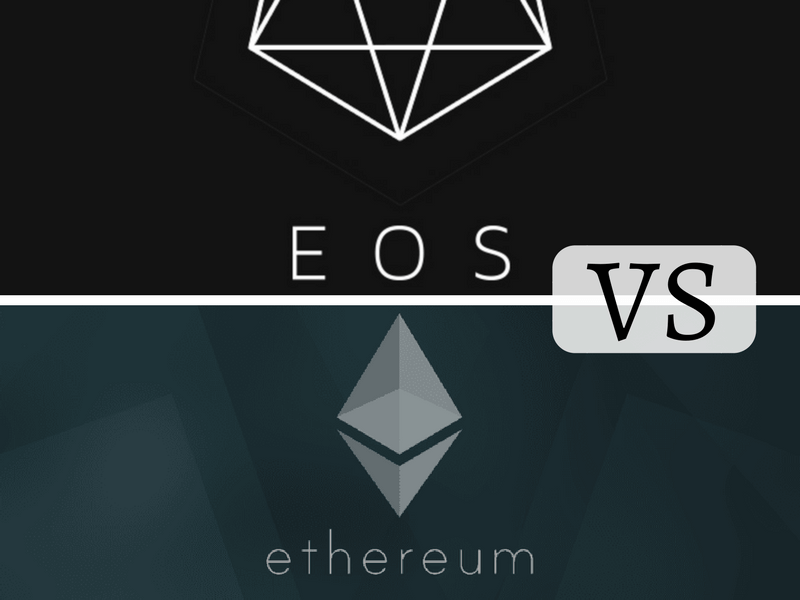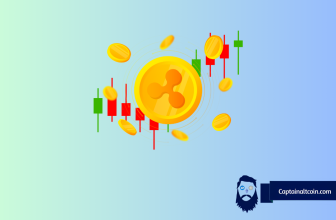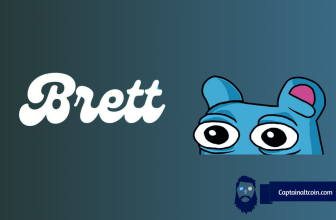
Ethereum versus EOS
Similarly to how Ethereum was seen as Bitcoins successor, EOS is viewed as the next evolutionary step forward in the world of blockchain technology. Naturally, this has resulted in somewhat of a strained relationship between the masterminds of these two projects, Vitalik Buterin and Dan Larimer.

The first to take a swing was Buterin, who reacted to an Ethereum Reddit post which asked a question if Ethereum has any counter arguments to the EOS creator Dan Larimer claims how his platform was far better than Ethereum, as evidenced by the number of transactions they offer as well as an increase of flexibility they introduce. The Ethereum creator accepted that EOS does offer substantial number of transactions but claimed that it does so through a framework which expels the securities of Merkle proofs.
According to Vitalik, EOS made it unthinkable for regular users to audit the system unless they are willing to purchase and run a full hub themselves. He additionally added that the idea of EOS decentralization through DPOS (a consensus algorithm called the Delegated Proof of Stake; In DPoS, blocks are mined or generated by stakeholders) causes dependence on voting. Such dependence requires a strong voter motivating mechanism; if such mechanism doesn’t exist the network can expect low voter turnouts and skewed voting results.
Ultimately, Buterin disagreed with EOS fees. He noticed how transactions are related directly to coins held, making the costs exorbitant for poorer clients “who are not interested in putting the entirety of their often very low savings into a funky new crypto asset in order to be able to use a Blockchain”.
Larimer punched back claiming that Ethereum is based on a system of trust with the stakeholders/block producers, whereas EOS offers a fast, simple synchronization for regular users, making the validation process less demanding.
Chief tech officer of EOS addressed the voter turnout issue as well, claiming that certain measures have been put into place to ensure that voter appearance and interest will be on a satisfying level. He also addressed the fees, claiming how EOS chain users more often than not possess the required tokens, and that the usage – to – cost imbalances will be fixed by market forces and laws of supply/demand.
Don’t forget to check out our full list of upcoming ICOs.
This little internet slap-fight gives us insight into how EOS plans on dealing with some of the apparent weaknesses of Ethereum. Ethereum (per Buterin) is the superior system, as EOS still has weaknesses in its framework which are yet to be dealt with. Even though EOS promises to deliver solutions for those weaknesses they will require widespread implementation in order to determine if they work better then what Ethereum offers (and if they work at all). One of the biggest challenges for app developers in the blockchain world is the need to actually build an entire new blockchain application from scratch.
On top of that, traditional Bitcoin-based Proof-of-Work (POW) and Proof-of-Stake consensus mechanisms require large amounts of hashing power and a large distribution of network tokens to ensure that the application is valid and secure. Smaller business owners and startups simply don’t possess funds/manpower to independently create and run a widely distributed, powerful computer network which will secure their application. Another issue with the Proof-of-Work consensus mechanism is the difficulty in fixing broken applications. In order to fix a broken application, a disruptive hard fork is required which disrupts the entire Ethereum network.
Recent DAO failure showed that broken applications on Ethereum either result in investors losing significant amounts of money or cause abovementioned disruptive hard forks. Each hard fork also comes with a risk of spawning multiple competing chains (example being Ethereum Classic splitting after the DAO failure).
Enter consensus mechanism called Delegated Proof-of-Stake (DPOS). This Graphene-based technology can be operated by a relatively small number of processors without the same network security concerns, although they come with concerns of their own, including problems in achieving larger distributions of network tokens as well as developing the required cryptography and blockchain technology to interact with their application. EOS includes a mechanism which can freeze broken applications. For example, the abovementioned DAO issue could have been frozen, fixed and updated without disrupting other EOS applications if DAO was built on the EOS platform.
Furthermore, the DPOS consensus mechanism cannot spawn multiple competing chains during a hard fork. This is evidenced by over 19 successful hard forks experienced by the Steem network. Furthermore, EOS will include a legally binding constitution that establishes a common jurisdiction for dispute resolution, and it will also include self-funded community benefit applications that will be selected by stake-weighted voting.
Recently, Dan Larimer (inventor of Bitshares, Graphene, and Steem/Steemit), along with the eos.io team, announced the development of EOS, a consensus blockchain operating system that provides databases, account permissions, scheduling, authentication, and internet-application communication to app developers. He claims that EOS will provide developers the tools they need so that they can focus on the specific business logic for their application, without worrying about the cryptography implementations or communication with the decentralized computer (i.e. blockchain). Furthermore, EOS will use parallelization to make possible blockchain scalability to potentially millions of transactions per second.
Because of the dependence of ICOs and other Blockchain projects on a platform (currently heavily favoring Ethereum), EOS represents a new system that can allow for features that Ethereum does not. Buterin and Ethereum devotees, however, see the new system as more flawed than the original. Currently Ethereum has the market advantage, being the first platform to start operating in the smart contract space. Consequently, a lot of systems have been built on the Ethereum platform as it has proven itself to be a commercial grade blockchain.
Examples of successful Ethereum-based Dapps that have achieved millions of dollars in market cap include Golem, Augur and Melonport. Each of these apps wants to rewire the economy by using the blockchain technology, and move us a step closer to a decentralized world. EOS is looking to implement a similar model while bringing never before seen levels of scalability, speed and decentralization.
It maybe a bit harsh to say so but right now EOS is still in Ethereums shadow, mainly due to the fact that Ethereum has an actual functional platform. Oh, and let’s not forget about the small matter of EOS using Ethereum to launch its ICO. Even if EOS turns out to be superior and developers adopt it – it doesn’t mean it will win its apparent war with Ethereum. EOS will need to become a platform on which one can develop quality and commercially accepted apps to truly legitimize itself as a potential Ethereum competitor. On paper, EOS’ delegated proof-of-stake (DPoS) consensus protocol, decentralization, speed, energy usage, fees look very promising. Currently, with its market cap of $5.922.951.464 USD and a price of 9.20 USD the market clearly believes there is something there, but it’s not yet convinced that it will supplant Ethereum as the preferred decentralized application platform. There are several developers testing the EOS platform and news from these tests could give potential EOS coin holders additional confidence. While Ethereum does have the first mover’s advantage, many fellow first movers in various other industries all had early success and led their markets until they were unseated by superior, generation 2 competitors (RIP MySpace, you won’t be missed). It is still unclear how the revenue model is going to succeed, so there are still some big question marks that need to be answered there. All in all, it remains to be seen what the future holds. What is certain is that both EOS and Ethereum have ambitious plans for the future and will continue to battle it out for that coveted title of the next Blockchain-based platform of choice.
If you are hardcore crypto-fanatic, you probably hold some of these coins as well. Here are the wallet solutions for them:
- Read here about best bitcoin wallets.
- Read here about best ETH wallets.
- Here is our list of best dashcoin wallets.
- Wonder what is the best wallet for Litecoin? Click here to find out.
- Read here about best NEO and GAS wallets.
- Here is our list of best Bitcoin Cash wallets.
- Read here about best PIVX wallets.
- Searching for best best wallet for ripple? Check this out.








Great comparative article that didn’t seem to be biased. This is what crypto reporting needs more of so thank you for this. In providing digestible technical analysis that came off as fair, you are further educating many different levels of crypto enthusiasts. Would be interested to see more comparisons of blockchains with competing goals or solutions!